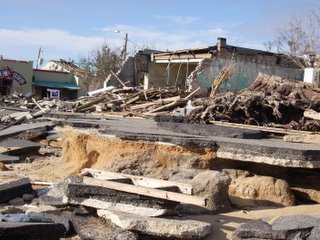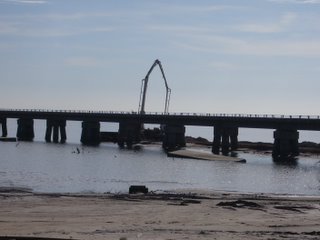Won't be missing 2005
For many, including my family, 2005 will always be the year of Katrina. The world will be broken down into life before and after the storm. On the human scale, I expect that there will be fewer people living along the gulf coast in 2006. Many of the evacuees just have nothing to return to. I wait to see if this truly will be one of those seminal events that forces all of us to reevaluate how we live with nature, how we protect ourselves, and how we respond to the needs of our neighbors. I fear Katrina will be a harbinger of other, greater challenges we will face from a changing environment.
The Year of Land Trust Reform
2005 will also be a landmark year for land trusts. Under heavy pressure from the Senate Finance Committee, trusts have begun down the road of greater accountability and toward more organizational professionalization. In April, the Finance Committee began its hearings on conservation easements and whether the program had suffered such abuse that it should be shut down. Thankfully, the answer was no. And for that, I credit the effort by the LTA and all of its members to convice the Senate that legitimate trusts want reform. The LTA's accreditation plan and other suggestions accomplished the purpose of providing a roadmap toward greater accountability. (Here's the synopsis I posted explaining the proposed changes.) But those changes may also spell the end for small, local trusts that won't have the resources to comply with the requirements. That sparked a heartfelt debate over the future of the Land Trust Movement. I do think it's inevitable that we will see more land trust bankruptcies as all of this shakes out.
The Year of Alternate Media
2005 has also been the year of the explosion in alternate media. From blogs to Ipods, choices abound. It's been a nervous time for folks like me, who pay the mortgage by working in Mainstream Media. Blogging is fun, but except for a select few it is not a money making proposition. But as in all revolutions, it's both a frightening and exhilarating time. Just by playing around with this little blog I've learned so much about the world that frankly I wouldn't know if I stuck to my normal diet of newspapers, magazines and television. I've also had the chance to meet some fascinating folks in cyber space. I really will miss reading Jon Christensen each day, although he promises not to completely disappear from the scene. Jon's nordic cousin Tom Andersen not only keeps us updated on the latest LNG terminal news but also his hobnobbing with all sorts of critters on Long Island. (My blog's still worth more than yours, Tom!)
Finally, I've met some even more far flung folks, learning about life above the Arctic Circle. Seriously, have you looked to see how far north Arctic Bay really is?.
To those of you who take a few minutes out of your day to check in here, thanks. I hope you've learned a few thing, and that you'll keep stopping by in the new year. Happy 2006 everyone.







